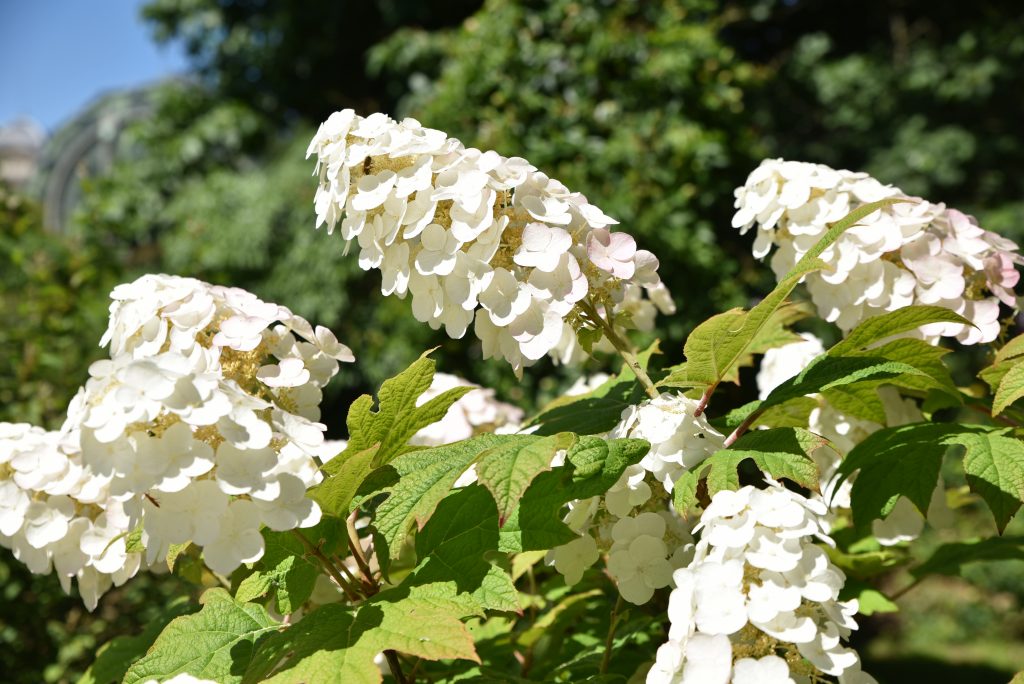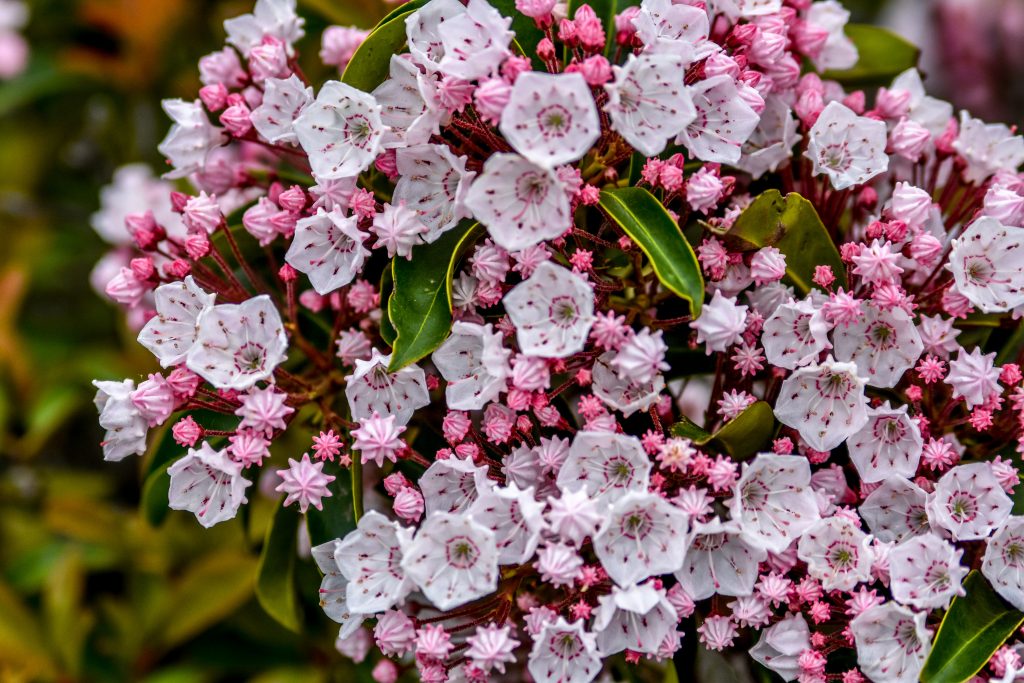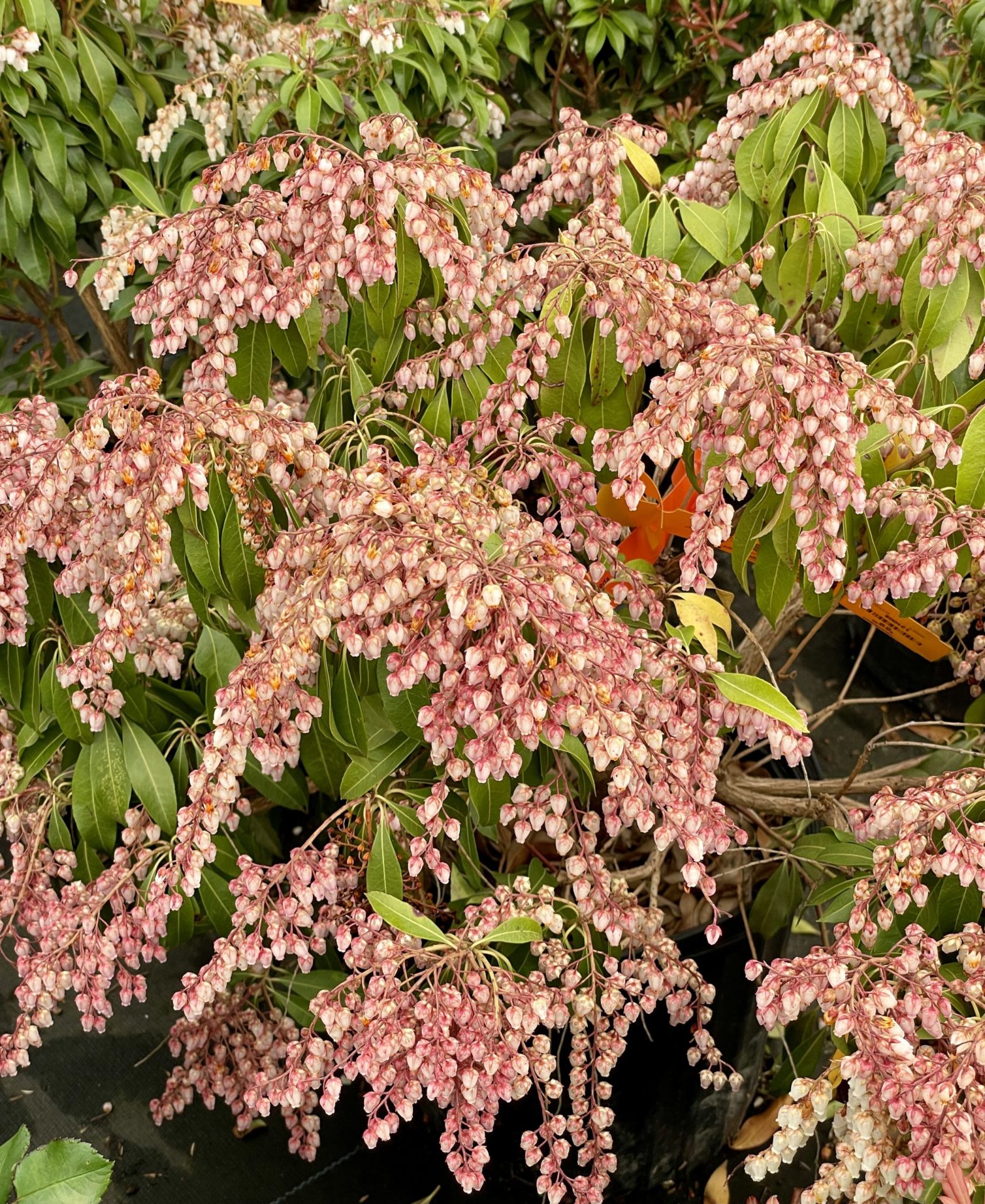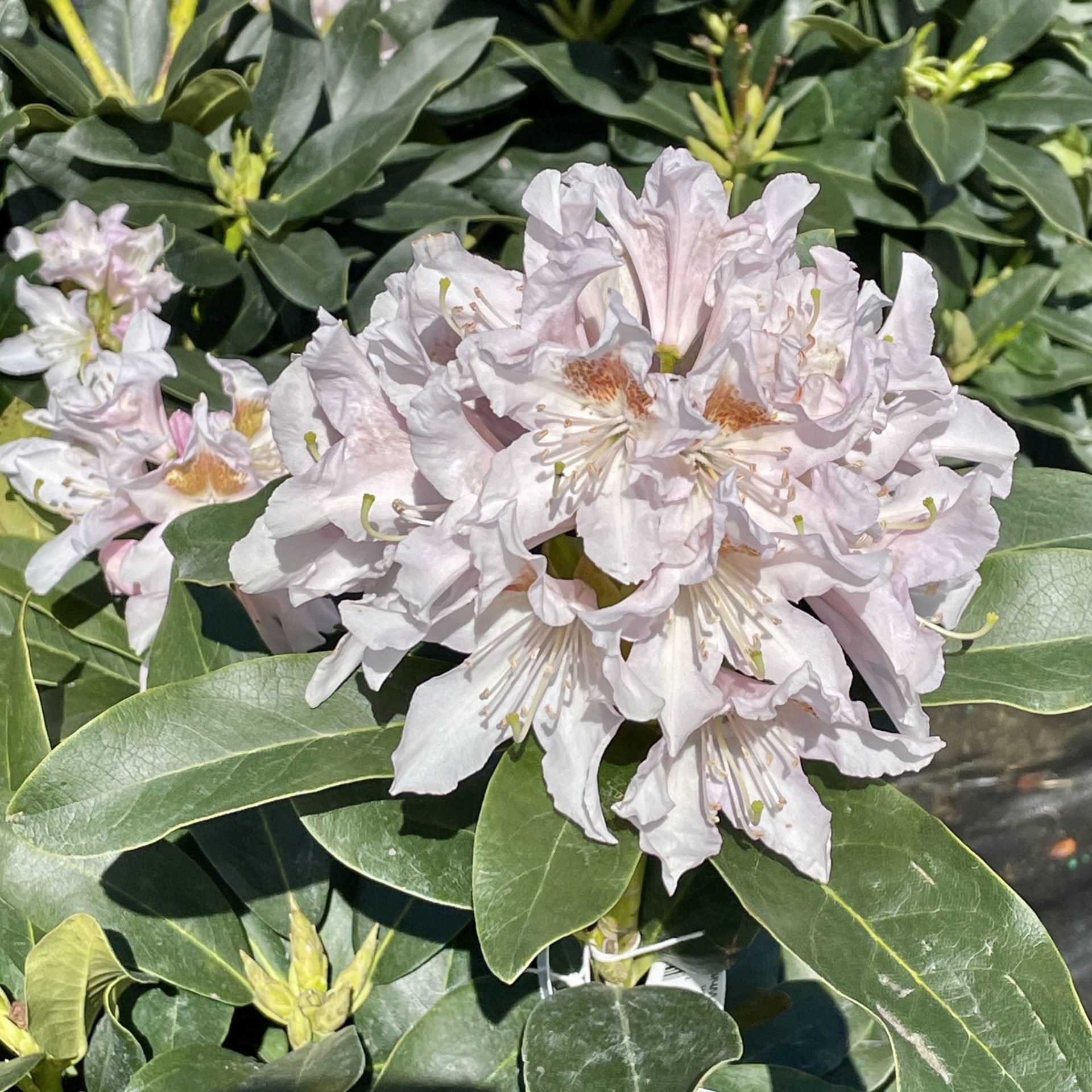Flowering shrubs are an essential element in most residential landscapes. Not all of us have perfect, sunny yards resplendent with magnificent flowering shrubs. Have you been discouraged from growing flowering shrubs because of shade in your yard? Maybe there is a shady corner that has been languishing? Get ready for some excitement with more texture and color in your landscaping than you thought possible when you choose any of these gorgeous shrubs.
Smooth hydrangea (Hydrangea arborescens)
A North American native hydrangea that is shade tolerant, the smooth hydrangea has so much to offer. With an upright but open shape and excellent winter hardiness, these flowering shrubs for shade produce globe-shaped clusters of creamy white blooms in high summer. Topping out around 4 feet tall, the straight species is lovely, but showier cultivars, such as ‘Annabelle’ and ‘Invincibelle’, produce larger blooms. Unlike many other hydrangea species, the flowers of smooth hydrangea are produced on new growth, so pruning can take place in the early spring and there’s no chance of cutting off the current season’s blooms.
Oakleaf hydrangea (Hydrangea quercifolia)
A wide-spreading, 6-foot-tall, North American native shrub for shade, oakleaf hydrangea deserves a home in every shady landscape. Even in the winter the peeling bark of the oakleaf hydrangea is deserving of our attention. The large, oak leaf-like leaves turn an amazing orange and then a deep burgundy in the autumn. Large, cone-shaped panicles of creamy white flowers are produced from the woody stems in summer. The merits of this shrub for shade cannot be stressed enough. Many compact cultivars available.

Mountain Laurel (Kalmia latifolia)
Mountain laurel is a native plant in eastern North America. Its natural habitat is in woodland areas, where it is shaded by trees. This shrub sports glossy evergreen leaves and produces showy clusters of flowers in late spring. Cultivars have been developed just for use in the landscape, including the dwarf Minuet laurel, which has more vibrant flowers than those on wild mountain laurels. Where soil is not sufficiently acidic, fertilizing with an acid-enhanced fertilizer, like that used for azaleas and rhododendrons, will help mountain laurel thrive. Prefers part shade but can tolerate full sun.

Japanese Rose (Kerria japonica)
Among deciduous shrubs, Japanese rose is one of the most shade-tolerant shrubs available and will do better than survive in shade. This shrub flowers in spring and may bloom multiple times in partial shade. The bark is kelly green to greenish-yellow throughout the winter. Seriously overgrown shrubs can be revived by cutting them all the way back to the ground in the fall.
Andromeda (Pieris japonica)
A native of Japan and China, this shade-tolerant shrub offers the best of both worlds; it is not only a flowering shrub but also an evergreen. The reddish buds appear in late winter, offering attractive color. Andromeda shrubs may offer something else, too: fragrant white flowers in early spring before most other plants flower. Feeding is best done with an acid fertilizer, such as that used for azaleas.

Azalea and Rhododendron (Rhododendron)
What we gardeners commonly call rhododendrons and azaleas are actually one very large genus of plants botanically classified in the genus Rhododendron. Gardeners distinguish rhododendrons from azaleas by how their flowers are produced. Azalea flowers are funnel-shaped and borne singly, while rhododendron flowers are larger and produced in clusters. All rhododendrons are evergreen, but there are both evergreen and deciduous azalea species. Regardless, both rhododendrons and azaleas are great flowering shrubs for shade. They are both attractive to early season pollinators and make beautiful statements in partial to full shade. Unless your soil is already heavily acidic, fertilize yearly with an acid-enhanced fertilizer in late winter or early spring.
Coast Leucothoe (Leucothoe axillaris)
Coast Leucothoe produces urn-shaped bunches of small flowers that are similar to those on Pieris japonica; in fact, the two bushes belong to the same family (Ericaceae). This weeping evergreen shrub is native to the U.S. and is often used in place of boxwood for hedges and boundaries. Before planting, dig in a good amount of peat moss to a depth of 18 inches, which will provide acidity and improve moisture retention.
Virginia Sweet Spire (Itea virginica)
This North American native shrub blooms in summer. Long panicles of creamy white flowers drip from the stems in mid summer. While this shrub does well in full sun, it’s surprisingly tolerant of shade, too. The deciduous nature of the plant means there are no leaves on it during the winter, but in the fall, the foliage turns a deep red-purple that’s just stunning. The fragrant blooms are adored by many of our native pollinators. ‘Little Henry’ is a great dwarf variety.
Clethra (Clethra anifolia)
Late to leaf-out in spring, often waiting until May, the glossy dark green 3-4” summer leaves take on attractive shades of yellow to golden brown in autumn before dropping. In bloom from late July and well into August, individual white florets open progressively along the 3-6” upright spikes (technically “racemes”), permeating the air with a heady fragrance. Although it prefers
moist soil conditions, Clethra and its cultivars adapt well in most local gardens (as long as the soil doesn’t dry out), full sun or partial shade, even tolerating roadside and seaside conditions. Because it forms flowers on new growth, it can be cut-back most anytime, ideally in late fall or early spring, without sacrificing bloom. Several recent Clethra alnifolia cultivars offer features compatible for many gardens, including smaller gardens.
Slender Deutzia (Deutzia gracilis)
These spring-blooming flowering shrubs for shade are deciduous and vase-shaped. They’re easy to grow in average garden soil and require very little care. Topping out at around 5 feet tall, they can be kept smaller by pruning them just after they bloom. The prolific flowers are pure white and nearly an inch wide. Each five-petaled flower lasts for several weeks. Slender deutzia is hardy to -20 degrees F. Though deutzia flowers best in areas that receive full sun, this shrub is quite tolerant of partial to moderate shade, though dense shade should be avoided.
From David Beaulieu at thespruce.com and Jessica Walliser at Savvygardening.com








